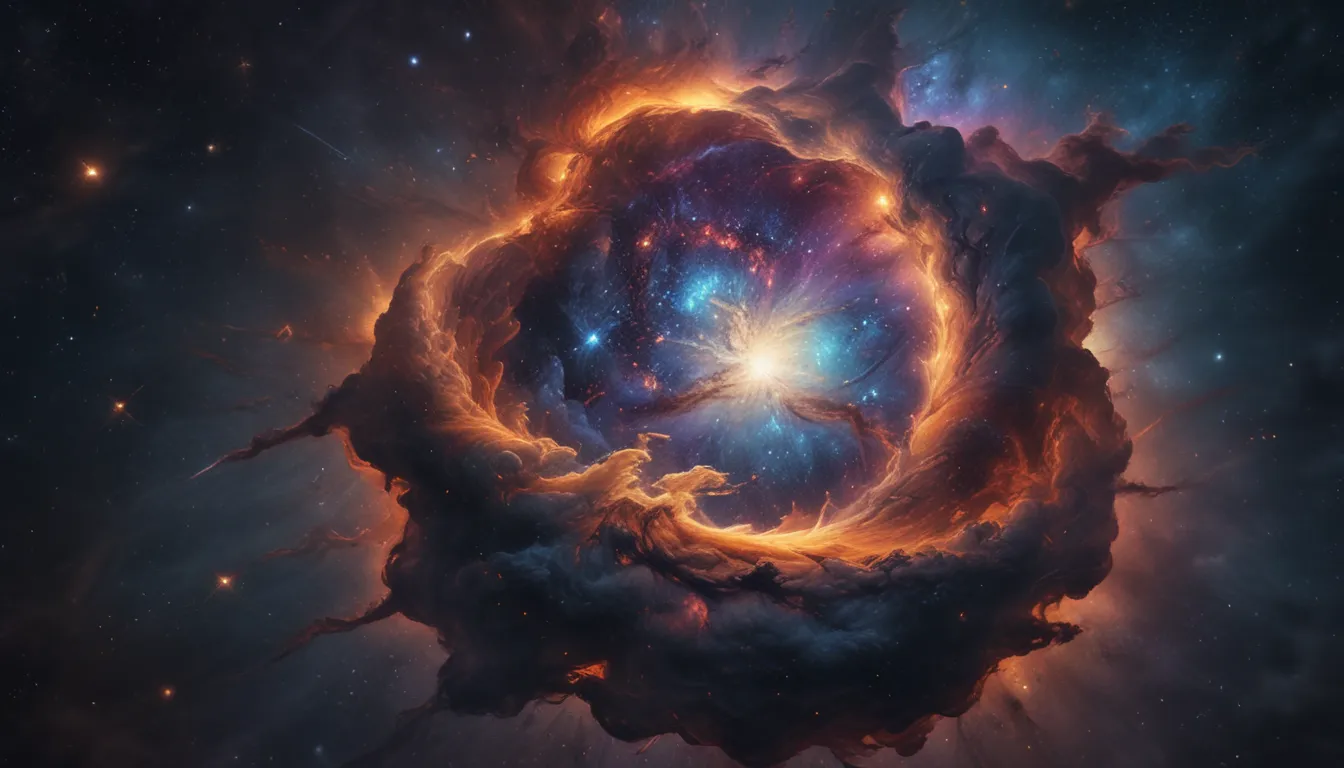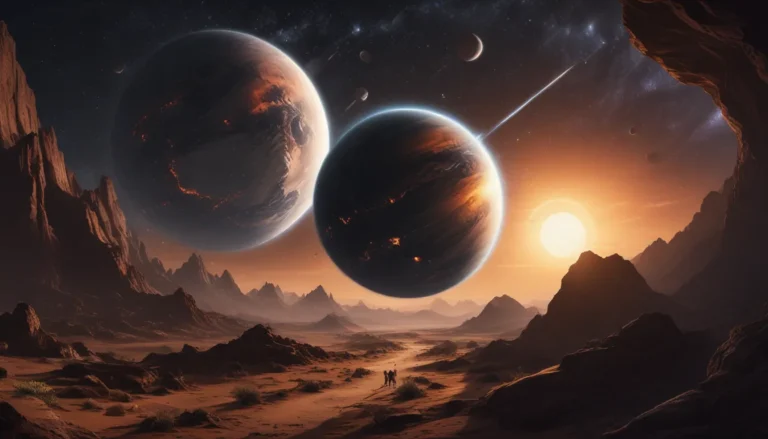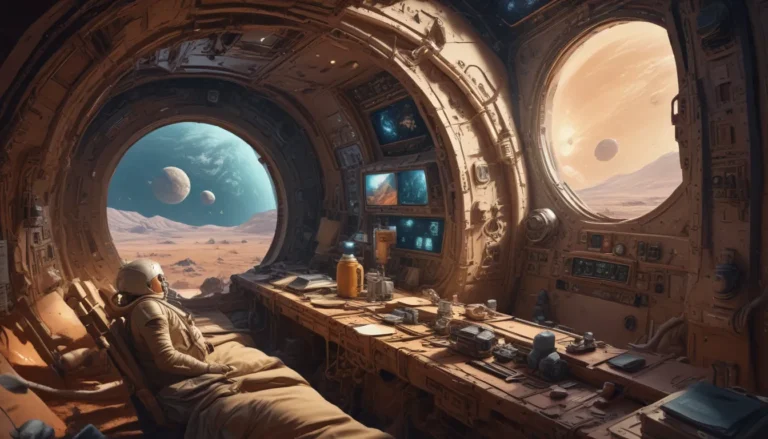The pictures we use in our articles might not show exactly what the words say. We choose these pictures to make you interested in reading more. The pictures work together with the words but don’t take their place. The words still tell you the important facts.
Have you ever gazed up at the night sky and wondered about the stunning celestial formations scattered across the vast expanse of the universe? Stellar nebulae, also known simply as nebulae, are among the most captivating cosmic wonders that continue to intrigue astronomers and space enthusiasts alike. These ethereal clouds of gas and dust not only display mesmerizing colors and intricate structures but also play a crucial role in the birth of stars and the formation of planetary systems.
In this article, we will embark on a fascinating journey into the realm of stellar nebulae, uncovering eight intriguing facts that shed light on their significance in shaping our understanding of the cosmos. From their massive clouds of gas and dust to their role in cosmic recycling processes, each fact reveals a new layer of complexity and beauty that defines these enigmatic entities. So, prepare to delve into the depths of space and unlock the mysteries behind stellar nebulae as we explore their awe-inspiring nature.
Stellar Nebulae: Mysteries Unveiled
Stellar nebulae stand as immense clouds of gas and dust that populate the vast expanse of outer space. These nebulae, primarily composed of hydrogen and helium with trace elements of heavier substances, serve as the cosmic nurseries where stars are born and planetary systems take shape.
Within the depths of stellar nebulae, the intricate process of star formation unfolds. Gravity acts upon the dense regions of gas and dust, causing them to collapse and form protostars that eventually ignite and give birth to new stars. This captivating phenomenon not only showcases the immense power of gravitational forces but also underscores the dynamic nature of the universe's birth and evolution.
The Radiant Colors of Stellar Nebulae
One of the most captivating aspects of stellar nebulae is their vibrant display of colors that adorn the cosmic canvas. These glorious hues are a result of the ionization and excitation of the gas within the nebula, triggered by the intense ultraviolet radiation emitted by nearby stars. Each color reflects a unique chemical composition within the nebula, creating a mesmerizing visual spectacle that captivates astronomers and stargazers alike.
The Orion Nebula: A Celestial Masterpiece
Among the myriad stellar nebulae scattered throughout the universe, the Orion Nebula stands out as one of the brightest and most visually striking. Located in the Orion constellation, this nebula has captivated observers for centuries with its breathtaking beauty and intricate structures. Its prominence in the night sky serves as a reminder of the cosmic wonders that adorn our celestial landscape.
Shaping Celestial Destinies: Stellar Winds and Supernova Explosions
The intricate structures observed within stellar nebulae are not merely static formations but dynamic creations shaped by the powerful stellar winds emanating from newly formed stars. These high-speed particles sculpt the surrounding gas and dust, giving rise to the stunning patterns and structures that characterize nebulae. Moreover, in some instances, stellar nebulae can trigger the dramatic demise of massive stars through supernova explosions, showcasing the immense forces at play within these cosmic realms.
Cosmic Recycling: The Circle of Life in the Universe
Stellar nebulae play a pivotal role in the cosmic recycling process, where the enriched materials from dying stars are released back into the nebulae, becoming the building blocks for new stars and planetary systems. This continuous cycle of matter underscores the interconnectedness of cosmic phenomena and highlights the essential role that stellar nebulae play in shaping the evolution of galaxies and solar systems.
Unveiling the Mysteries of the Universe
In conclusion, the enigmatic nature of stellar nebulae serves as a testament to the boundless wonders of the cosmos. From their role in star formation to their intricate structures and vibrant colors, stellar nebulae continue to inspire awe and curiosity among scientists and space enthusiasts worldwide. As we deepen our exploration of these cosmic entities, we come closer to unraveling the mysteries of the universe and gaining a deeper appreciation for the beauty and complexity that surrounds us.
Expedition Into the Cosmos: FAQs
-
What is a stellar nebula?
A stellar nebula is a colossal cloud of dust, gas, and particles that forms in space and serves as the birthplace of stars. -
How do stellar nebulae form?
Stellar nebulae form from the remnants of previous stars that have exploded in supernovae, mixing with the interstellar medium to create vast clouds of gas and dust. -
What causes the vibrant colors in stellar nebulae?
The vibrant colors in stellar nebulae result from the interaction of different elements within the cloud, emitting specific wavelengths of light that create the stunning hues we observe. -
Are all stellar nebulae the same?
No, stellar nebulae can vary in size, shape, and composition, exhibiting unique characteristics based on their chemical makeup and structural design. -
Can stellar nebulae give birth to planets?
While primarily serving as the birthplaces of stars, stellar nebulae can also initiate the formation of planetary systems through the aggregation of materials into protoplanetary disks. -
How do scientists study stellar nebulae?
Scientists employ a variety of instruments and techniques, including telescopes that observe different wavelengths of light and spectroscopy to analyze the chemical composition of nebulae. -
Where can we find stellar nebulae in space?
Stellar nebulae are not exclusive to our Milky Way galaxy but can be found in galaxies throughout the universe, showcasing the pervasive nature of these cosmic entities. -
Can we see stellar nebulae with the naked eye?
Some stellar nebulae, like the Orion Nebula, are visible to the naked eye under suitable conditions, while others require telescopes or specialized equipment for detailed observation.
Unlocking the Mysteries of the Cosmos
As we unravel the secrets of stellar nebulae and delve deeper into the intricate tapestry of the universe, we gain a profound appreciation for the beauty and complexity that surrounds us. Each new discovery and exploration brings us closer to understanding the enigmatic forces at play in the cosmic dance of creation and evolution. By embracing the wonders of stellar nebulae and other celestial phenomena, we embark on a transformative journey through the vastness of space, expanding our horizons and perspectives on the limitless wonders of the cosmos.
Join us in our celestial exploration as we unravel the mysteries of stellar nebulae and unearth the awe-inspiring wonders of the universe. Discover the secrets of star formation, planetary systems, and cosmic recycling processes that shape our galactic landscape. Let the boundless beauty of the cosmos ignite your curiosity and wonder as we embark on a cosmic odyssey through the vastness of space.






